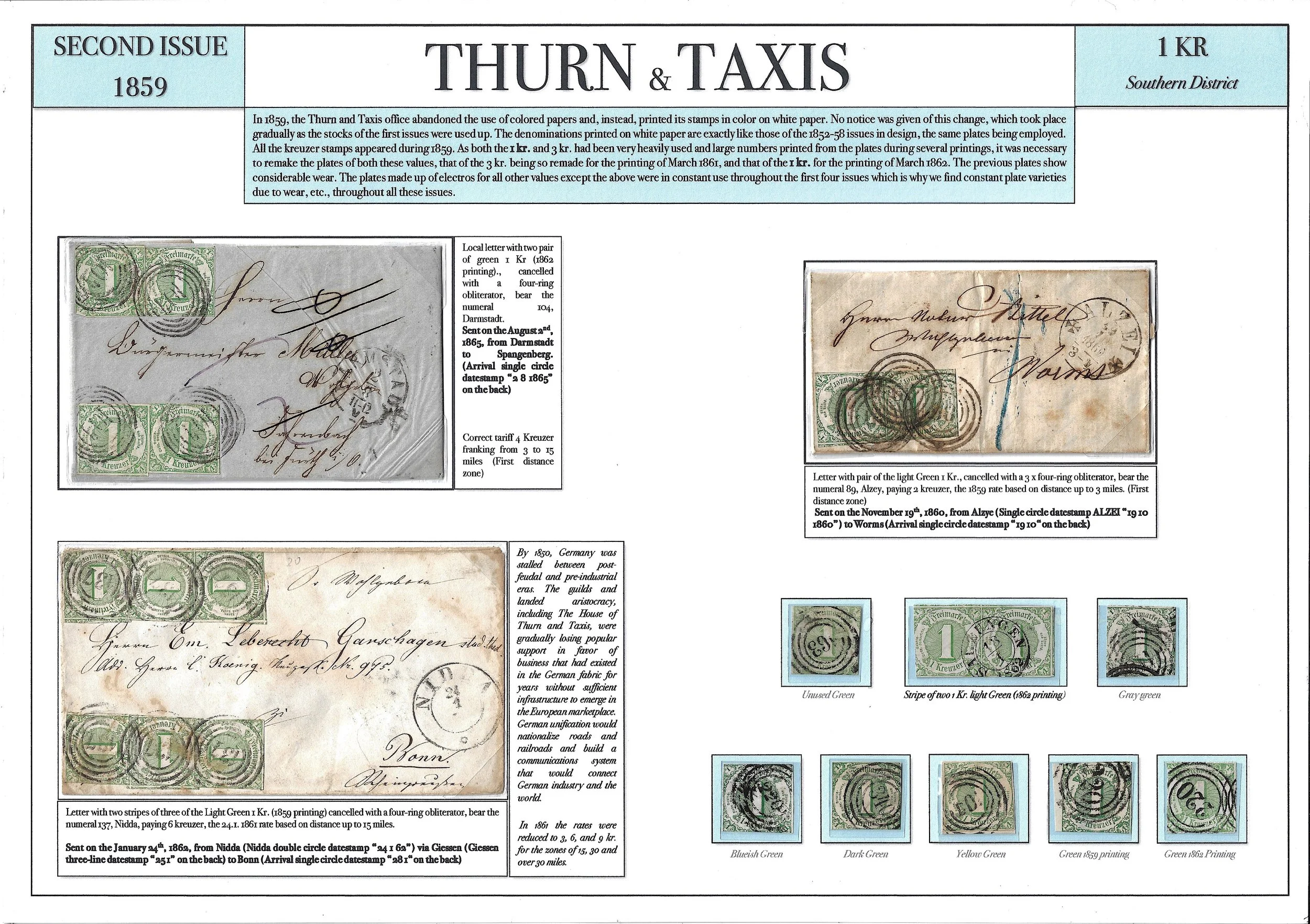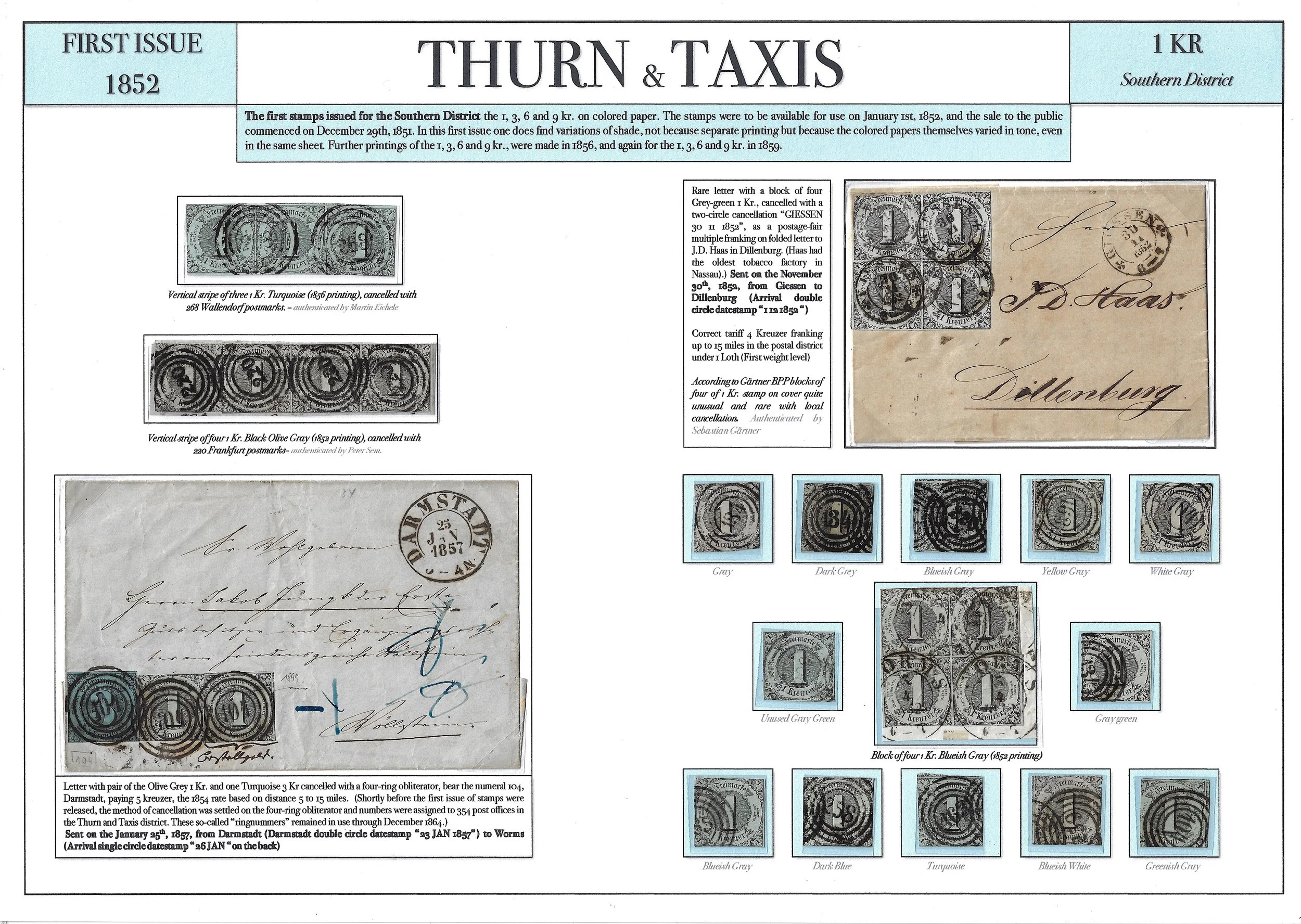"Thurn und Taxis: Pioneers of Postal Services (1500-1866)"
Introduction
The Thurn und Taxis postal system, spanning from the 16th century to its decline in 1866, was a trailblazer in mail services across Europe. This collection try to explore the remarkable history of the Thurn und Taxis postal system, its evolution, and its impact on the development of postage stamps.
The Early Postal System
In the 16th century, the Holy Roman Empire was a patchwork of territories with diverse postal systems. The Thurn und Taxis family, of Italian origin, recognized the need for a more efficient postal network and obtained the exclusive postal rights for several regions.
Origins and Early Development
The Thurn und Taxis family, of Italian origin, recognized the need for a more organized postal system within the Holy Roman Empire, a conglomerate of territories with disparate postal arrangements. In 1490, Franz von Taxis was appointed as the postmaster of Innsbruck, Austria, marking the family's entry into the postal service.
Appointment as Imperial Postal Providers
In 1516, Emperor Maximilian I formally appointed Franz von Taxis and his descendants as the Imperial Postal Providers, granting them a significant monopoly over postal services within the Holy Roman Empire. This decree laid the foundation for the Thurn und Taxis postal dynasty.
Expansion of Postal Routes
One of the notable achievements of the Thurn und Taxis postal system in the 16th century was the expansion of postal routes. The family established an intricate network of relay stations and routes, facilitating the efficient transfer of mail across vast territories.
Courier Services
The Thurn und Taxis postal system employed couriers on horseback to carry mail between relay stations. These couriers played a crucial role in reducing mail delivery times and ensuring the secure transportation of letters.
Introduction of Postal Rates
The family introduced standardized postal rates, making it easier for senders to calculate postage costs. This move towards uniform rates simplified the postal service and encouraged greater use of the system.
Use of Horse-Drawn Carriages
In addition to courier services, horse-drawn carriages were employed to transport mail. This innovation allowed for the faster and more efficient movement of larger quantities of mail.
Continued Expansion
The Thurn und Taxis postal system continued to expand its influence and territorial coverage throughout the 16th century. Their commitment to improving mail services led to a growing reputation for reliability and efficiency.
The Birth of Postage Stamps
Precursors to Stamps: Before the widespread use of postage stamps, letters were often marked with handstamps or handwritten notations to indicate payment of postage. However, this system had limitations in terms of efficiency and security.
The Bavarian Experiment: In 1840, the Thurn und Taxis postal system, particularly in the Bavarian territories, experimented with prepaid adhesive postage stamps. These early stamps, known as "Bavarian Postal Stamps," featured a numerical value and the Bavarian coat of arms.
Efficiency and Standardization: The introduction of postage stamps streamlined the postal service by allowing senders to prepay postage, ensuring uniform rates, and reducing the risk of tampering or unpaid mail.
The Decline and Legacy
Annexation and Transformation: In 1866, the Thurn und Taxis postal system faced its decline as many of its territories were annexed by Prussia following the Austro-Prussian War. The system was absorbed into the Prussian postal administration.
Philatelic Heritage: The Thurn und Taxis postage stamps, especially the Bavarian issues, hold a special place in philatelic history. They are considered some of the earliest examples of postage stamps and are highly sought after by collectors.
My Conclusion
The Thurn und Taxis postal system, from its origins in the 16th century to the introduction of postage stamps in the 19th century, was a pioneering force in postal services. It brought centralization, efficiency, and innovation to mail delivery, setting the stage for the modern postal systems we have today. The legacy of Thurn und Taxis lives on not only in the history of postal services but also in the treasured postage stamps that mark this transformative era.
Thurn und Taxis collection is one of my old collection, it includes the years from 1530 to 1866. There are at the moment only few “collection pages” from these years already made - the actually number of the pages will be around 64 A3 pages, and I will add them here, one at the time, as soon as I am able to finalize them. My timetable with this collection is 04/2025.


